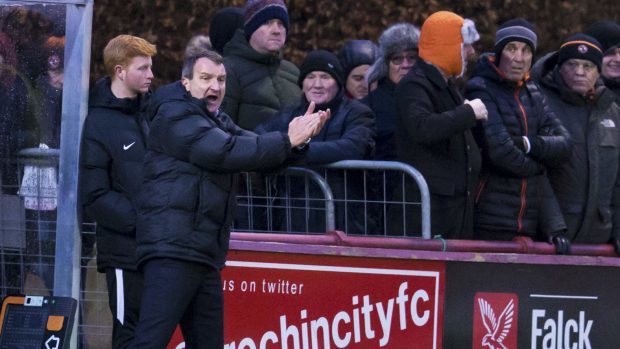Singing in the shower doesn’t make me Gregory Porter, and painting the living room won’t turn me into Leonardo Da Vinci. Similarly, screaming abuse and criticism, at their own players, dressed up as encouragement, doesn’t turn the fans doing it into Jose Mourinho or Brendan Rogers.
Csaba Laszlo was correct in midweek to say that his Dundee United players must hold their nerve, ignore the crowd, and play to his instructions, rather than panic and shell the ball forward on the exhortation of screeching supporters.
As fans we all think we know plenty about the game, and many do. The rational, calm, and sensible fans retain their passion, but also their wit, wisdom, and patience.
Howling like screaming banshees at players to ‘get it up the park’, when it’s obvious that the manager has set out clear instructions about the style of play, is completely counter productive.
Supporters baying at a player to do the very opposite of what he’s been coached to do all week is not only ignorant, it’s counterproductive to the desired outcome.
I was at Brechin last week and watched United play well in the first half, switching the ball all over the pitch in a fluid passing game, with quick touch and movement. In the second half as the part time side battled back they lost their rhythm.
In a ground where the fans are right on top of players, the criticism can be very personal and unrelenting, and very hard for players to ignore.
For players of a less robust mental constitution, constant condemnation from fans becomes debilitating, and the ball becomes a hot potato to be got rid of at the first opportunity.
If fans don’t have faith in the players or manager to carry out the game plan worked on all week in training, then on the pitch things can quickly become anarchic, unless the players can ignore the hostility from the terracing.
Here’s the harsh truth. None of us watching are as good as the guys on the pitch. If we were we’d be there, and they’d be on the terracing.
We all know supporters who ‘could have been’, ‘had trials at Celtic’, or ‘was destined for the top but for injury’.
We’ve all spun those comforting yarns about a pal or indeed ourselves, over a few beers, but like Santa Claus, they’re a comforting myth.
We do our professional players a huge disservice with our lack of faith in them. They may not be Lionel Messis but the majority of pro players, including part-time ones, have a level of skill way beyond our imagining.
That’s not to say there aren’t training ground players who can’t replicate on the pitch what they do every day on the coaching ground. However, often the failure to do that is because of the very things I’ve mentioned. Constant criticism, and carping, and barracking, are never the best way to get the best out of anyone.
Supporting a team means doing what it says on the tin. It seems obvious that a little encouragement is a lot more productive than a torrent of abuse.


